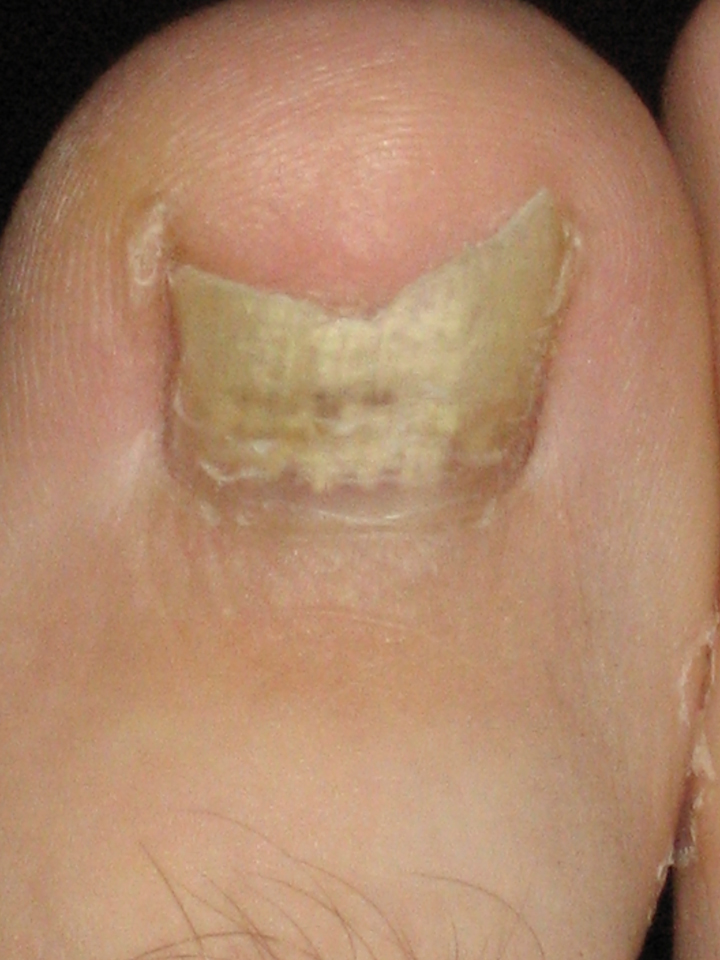
Affiliated Foot Care Center
Call 860•349•8500 or 203•294•4977

The most common symptom of a fungal nail infection is the nail becoming thickened and discoloured: white, black, yellow or green. As the infection progresses the nail can become brittle, with pieces breaking off or coming away from the toe or finger completely. If left untreated, the skin can become inflamed and painful underneath and around the nail. There may also be white or yellow patches on the nailbed or scaly skin next to the nail, and a foul smell.
There is usually no pain or other bodily symptoms, unless the disease is severe.
Dermatophytids are fungus-free skin lesions that sometimes form as a result of a fungus infection in another part of the body. This could take the form of a rash or itch in an area of the body that is not infected with the fungus. Dermatophytids can be thought of as an allergic reaction to the fungus.
Toenail fungus, known as Onychomycosis, affects about half of Americans by the age of 70. It is relatively rare in children, but the incidence increases with age. Fungus infections occur when microscopic fungi gain entry through a small trauma in your nail, then grow and spread in the warm, moist environment inside your socks and shoes. The causative pathogens of onychomycosis include dermatophytes, Candida, and non-dermatophytic molds.
Symptoms of toenail fungus, which may be caused by several types of fungi, include swelling, yellowing, thickening or crumbling of your toenail, streaks or spots down the side of your nail, and even complete loss of your toenail. Toenail color can vary from brown or yellow to white.
Fungal infections can affect your fingernails as well as the toenails, but, since your toenails grow more slowly, toenail fungus is more difficult to treat. It occurs most often on your big or small toe, but it may occur on any toe.
You can get toenail fungus in damp areas such as public gyms, shower stalls or swimming pools, and you can easily pass it along to the rest of your family. Athletes and people who wear tight-fitting shoes or tight hosiery that cause trauma to the toes or keep the feet from drying out are at higher risk. You can also get fungal toenails from pedicure salons that do not appropriately sterilize their equipment.
If the skin of your feet has abnormal pH levels, or if you don't thoroughly dry your feet after taking a bath or shower or after exercise, if you have a compromised immune system or if you have been exposed to someone else with this fungus, you are also at risk. You also have an increased risk of developing toenail fungus if you are a diabetic because your immune system is compromised. You should have your nails cut and debrided by Dr. Fosdick. We can also prescribe medicated toenail polish and oral antifungal medication to get at this fungus and stop it from causing further problems. We have also found that High Powered Laser Therapy can help. With just a few quick visits, your unsightly toenails can be completely free of discoloration with none of the side effects of oral medications.